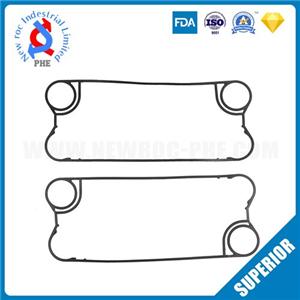Common problems of plate heat exchanger
As an energy-saving equipment, plate heat exchangers sometimes cause problems such as these due to improper use methods. We can analyze and deal with some simple faults by ourselves. Here we summarize the common problems for everyone.
Causes of liquid leakage in the plate heat exchanger: due to improper selection of the heat exchanger plate material, cracks or perforations of the heat exchanger plate corrosion, and operating conditions that do not meet the planning requirements; after the heat exchanger plate is cold stamped and formed Residual stress and stress corrosion caused by too small installation dimensions during assembly; slight leakage at the leakage groove of the heat exchanger plate, which causes the harmful substances in the medium to concentrate and corrode the heat exchanger plate, forming a liquid stream.
The treatment method of the liquid string is: replace the heat exchanger plates with cracks and perforations, find the cracks of the heat exchanger plates on the spot with the light transmission method; adjust the corresponding operating parameters to make them reach the planned conditions; plate heat exchanger repair and assembly The clamping dimension should meet the requirements, and the installation dimension of the heat exchanger is not as small as possible.
The reason for the excessive pressure drop of the plate heat exchanger: the pipeline of the operating system is not purged normally, especially many dirt such as welding slag in the pipeline of the new device system enters the inside of the plate heat exchanger, because the plate heat exchanger is aborted The cross-sectional area is relatively narrow, and the frequent and suspended matter in the heat exchanger gather at the corner hole and the diversion area, which causes the flow channel area to be greatly reduced, and the main pressure loss is in some parts; the plate heat exchanger is selected When the area is too small, the flow rate between the heat exchanger plates is too high and the pressure drop is too large; after the plate heat exchanger has been operated for a period of time, the pressure drop is too large due to the fouling on the surface of the heat exchanger plates.




